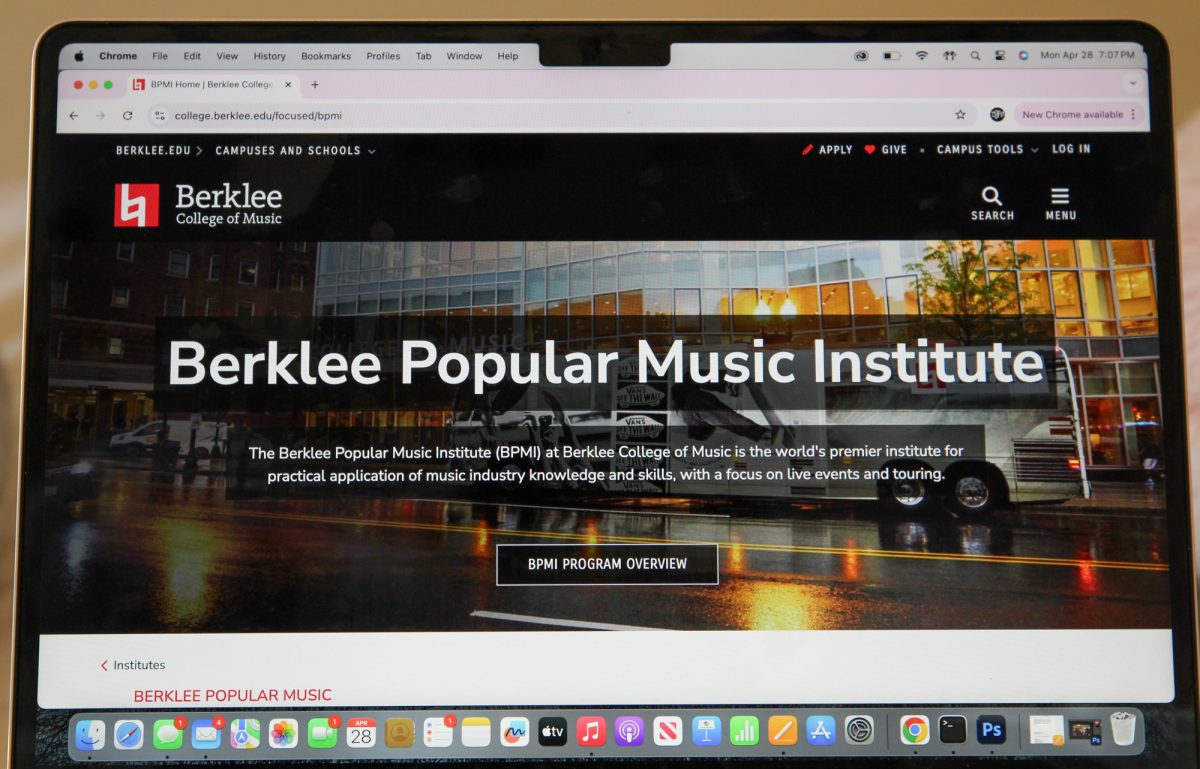At Boston University, the Prison Arts Project of the College of Fine Arts strives to understand how the disproportionate imprisonment of Black and brown individuals affects their children and the next generation of their communities.

CFA professor André de Quadros led a discussion Thursday about “Children of War,” a poem by Ras-Jahallah Shabazz — a formerly incarcerated individual, who was also at the event. The event also included Shabazz’s son, rapper MBE June, and 2020 CFA graduate VonDerrick Taylor.
“We’re all just children who become forgotten casualties of a drug called ‘War’ and the children it bore,” Shabazz said while reciting his poem at the beginning of the event. “Need I say more?”
The event, titled “Children of War: A Performance and Conversation,” was a part of the BU Prison Arts Project and organized by the Office of Diversity and Inclusion, the BU Arts Initiative, the Howard Thurman Center for Common Ground, African American Studies and the Initiative on Cities.
Shabazz received two life sentences and an additional 40 years for his participation in the Miami drug trade in 1996. At the time, he was married with a son and two daughters. He was not even 30 years old.
Shabazz was released in 2020, and chose at first not to tell his children, unsure of what to say. Now, he’s opening the conversation to the BU community at large.
“I am so honored to be here today and to be given this chance to work with my son … also the opportunity to share with you all a poem that expresses some of my deepest thoughts about the plights of my children, and so many other children across the nation,” Shabazz said, “those forgotten voices who are serving time with their parents.”
The event was also curated by Judy Braha, assistant professor and program head of the Master’s of Fine Arts Directing Program at CFA, who said the event is a part of a larger outreach program about the prison system, which unjustly targets Black and brown people.
“Both the poem that the workshop was based on and the conversation was really talking about what a huge cost that is to not only the individuals but the country and the communities that these folks come from,” she said. “There’s a cycle that gets put into motion that is very hard to correct when parents are missing for decades.”
As part of the Prison Arts Project, Thursday’s event coincided with a Race, Prison, Justice: Illuminating Story Through the Arts virtual gallery opening April 22.
The gallery will present students’ work that was prompted by “Children of War” and other artists’ work related to incarceration, including “works of art, music, poetry and spoken word so forth,” de Quadros said.
Activism is an important part of the CFA’s mission, de Quadros said, and BU’s own Prison Education Program that operates beyond the arts. The interdisciplinary work gives students the opportunity to incorporate their artwork and social activism.
“It’s a natural fit to bring all of that together, to work together, to create works of art, to become activists to use our art to tell stories to light the fire of hope,” he said, “that we can use to build a kind of world of justice and equity that we haven’t seen before.”
MBE June, Taylor and Shabazz all asked questions at the event about inspirations and personal experiences and how they affect their work as Black artists.
“I just hope that when people listen to my music or people see this artwork, art form, that we’re delivering that they’re impacted in a positive way and want to make changes,” MBE June said, “just like we’re striving to do.”
The group also presented a video project that was a spinoff of “Children of War.” Reflecting on the poem, Braha said it struck a chord with her and represents art’s power to create change.
“Somehow when something is captured in an artistic way, it finds its way to your heart, it finds a way into your mind in a different way than a newscast or newspaper,” Braha said. “This is really the power of art that each of us as individuals process each piece of art in our own way.”
Colin Boyd contributed to the reporting of this article.
This article was updated to better represent the “Race, Prison, Justice: Illuminating Story Through the Arts” virtual gallery.

























































































































